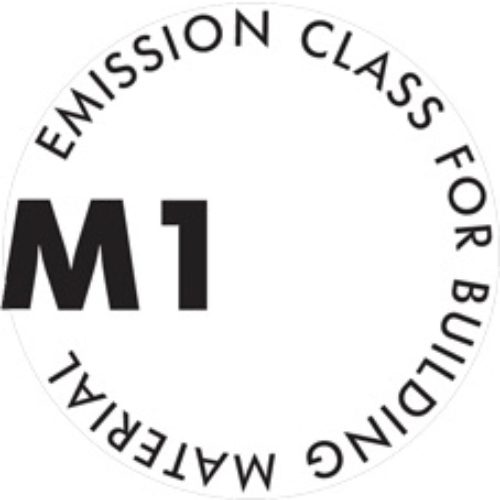M1- Finnish emission label
Here you can find information on the Finnish M1 emissions label for building products and furniture!

M1 emission label
The M1 emission label is a Finnish classification system for building products with regard to their emissions of volatile organic compounds (VOCs) into indoor air. It was developed by the Building Information Foundation RTS in Finland. The M1 label is one of a series of classifications (M1, M2 and M3), with M1 representing the most stringent emission requirements.
Products that carry the M1 label must meet strict requirements for the release of harmful substances, ensuring that they do not have a negative impact on indoor air quality. The classification aims to minimize exposure to harmful substances indoors and thus promote a healthier living and working environment.
Award criteria for the M1 emissions label
The requirements for the M1 label include, among other things:
- Limiting emissions of VOCs.
- Limiting the release of formaldehyde.
- Limitation of the odor (odor threshold).
For certification, the products are tested in independent laboratories to ensure that they comply with the specified limit values. The test lasts 28 days and includes an emissions and odor test.
Limit values for the M1 emissions label
| Criteria / Classification | M1 (mg/m2h) | M2 (mg/m2h) |
| TVOC (minimum of 70 % of the compounds must be identified) | ≤ 0,2 | ≤ 0,4 |
| Individual VOC (in μg/m3) | ≤ EU-LCI | ≤ EU-LCI |
| Formaldehyde (HCOH) | ≤ 0,05 | ≤ 0,125 |
| Ammonia (NH3) | ≤ 0,03 | ≤ 0,06 |
| Emission of CMR substances belonging to category 1A or 1B (Annex VI to Regulation (EC) No 1272/2008 * (in mg/m3) | ≤ 0,001 | ≤ 0,001 |
| Odor** | acceptable | acceptable |
* does not apply to formaldehyde and acetaldehyde.
** The result of the sensory assessment must be ≥ + 0.0.
Source of the table
The M1 emissions label is suitable for the following product groups:
Product groups for which the M1 emissions label is relevant include various building materials such as:
- Floor coverings: Carpets, PVC floor coverings, laminate, parquet, etc.
- Paints and varnishes: wall paints, varnishes, primers, sealers, etc.
- Insulation materials: Materials for thermal and acoustic insulation such as mineral wool, foams, wood fiber boards, etc.
- Adhesives and sealants: Products for bonding and sealing construction elements.
- Furniture and interior fittings: furniture made of wood-based materials, upholstered furniture, curtains, etc.
M1 Emission label: Certification body
The M1 emission label can be applied for at the Finnish Environment Institute (SYKE) in Finland. SYKE is the responsible organization that manages the certification and awarding of the M1 label for building products and materials.
You can find contact information here.
Costs for the M1 emissions label
The exact cost of certification with the M1 emissions label may vary depending on the product type and scope of testing. There are no fixed fees, as the costs may depend on various factors, such as the number of products to be tested, the specific testing requirements and any additional services.
Normally, manufacturers wishing to apply for the M1 emission label must contact the Finnish Environment Institute (SYKE) to obtain a quotation for the certification of their products. The cost may also depend on whether existing test results can be used or whether additional tests are required to demonstrate compliance with the M1 criteria.
Is the M1 emissions label mandatory?
The use of the M1 emissions label is not mandatory in the construction industry, at least not by law or in all countries. The M1 label was introduced in Finland and is recognized there to identify building products with low emissions of volatile organic compounds (VOCs). However, it is important to note that the use of this label is voluntary and is used as a guide by manufacturers and consumers to select products that can help improve indoor air quality.
Recognition of the M1 emissions label in other certification systems
The M1 emissions label was developed specifically in Finland to characterize the emissions of volatile organic compounds (VOCs) from building products. It is important to note that it is a national label and its recognition or use in other international certification systems such as DGNB, LEED, BREEAM or WiredScore is not automatically guaranteed.
In practice, it might be possible that products with the M1 emission label are considered positive in certain projects or situations, especially if they help to meet low VOC emission requirements. However, it would be advisable to check this on a case-by-case basis and, if necessary, consult with the respective certification bodies or experts in the mentioned schemes to obtain precise information on the recognition of the M1 label.


